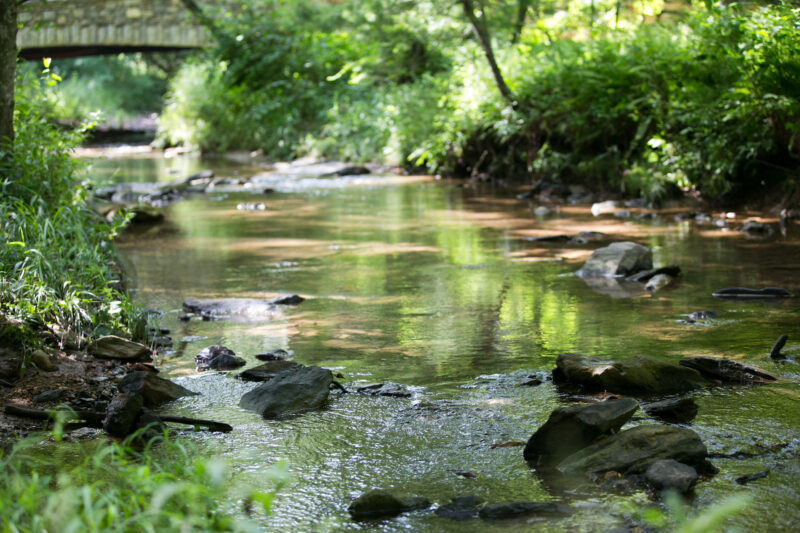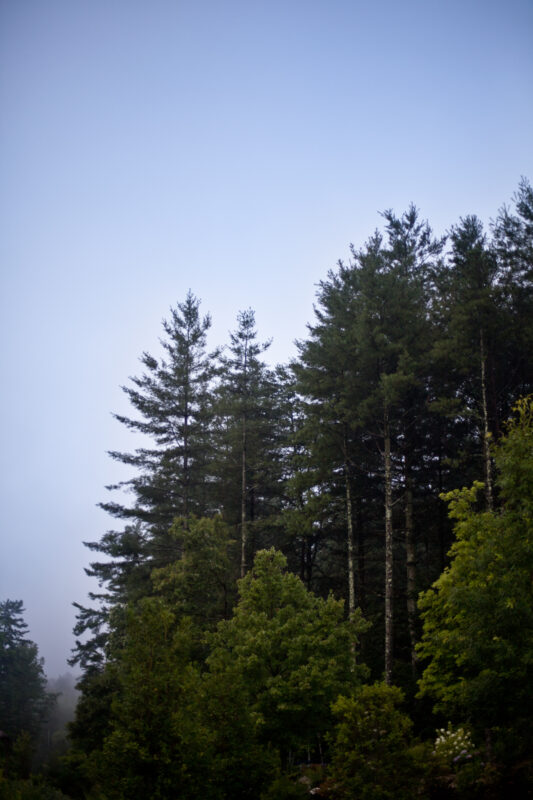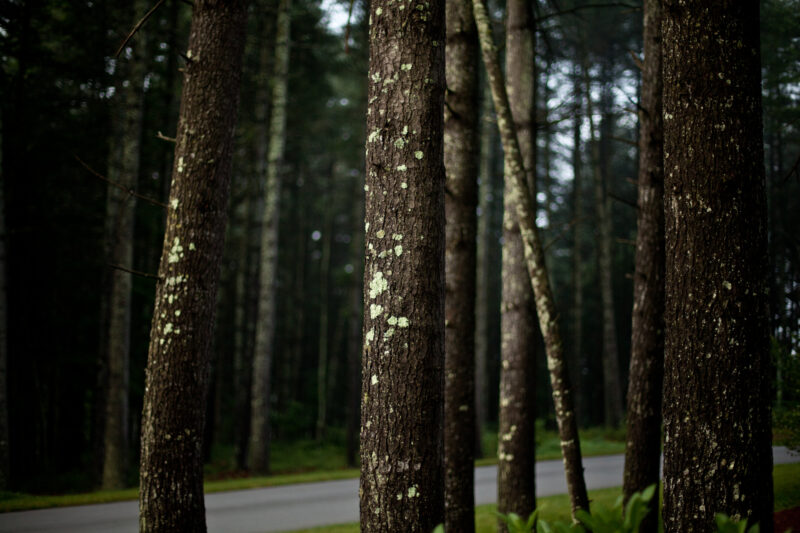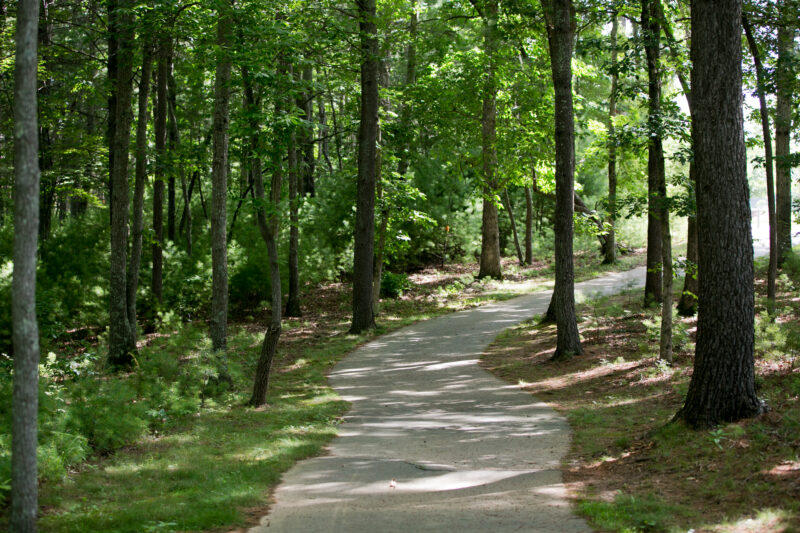
Experience the Natural Luxury of Forest Bathing
Each Ramble resident knows that the chance to experience the wonderment of nature lies just a few steps outside their front door. Among the neighborhood’s preserved woodlands lies an extensive trail system with miles of safe and beautiful walkways. While some jog, others walk their dogs or meander in seek of peace and quiet. In doing so, one is likely to hear the tranquil sound of a babbling brook as Dingle Creek ebbs and flows through the neighborhood. Some say the trickling water paired with the wind whispering above is the ultimate soundtrack for relaxation.
It is likely you have found yourself at an outdoor location, among the trees experiencing a similar sensation. Maybe you set out for a simple walk but were faced with a pleasant reminder; humans have an innate desire to live in harmony with nature. Today, we revisit this concept, as deliberate immersion into a forest can instinctively bring feelings of comfort and connection to the earth. In fact, it can be utilized as a mindfulness practice for health and healing. This is the art of “forest bathing.”

Through engaging in forest walks, one may achieve a sense of escapism, echoing the sentiment once uttered by Father of Landscape Architecture Frederick Law Olmsted, “a ramble is a wild garden, comprised of natural spaces intertwined with meandering paths, luring one peacefully away from everyday life.” The Ramble is the embodiment of this thought, where meandering paths and natural spaces are ubiquitous, offering vast opportunity to forest bathe.
It is easy to understand how a walk among beautiful trees can bring a sense of peace, but what is “forest bathing” exactly? Much more than an earthy catch phrase, it is increasingly recommended as a form of preventative healthcare and is part of a developing field of research.

“Shinrin-yoku,” a term coined by Director of Japanese Forestry Agency Tomohide Akiyama in 1982, directly translates to “forest bath.” It is also commonly known as “forest shower” or “absorbing the forest atmosphere.” Japan embraced it as an official health practice in the 1980s and is now home to dozens of parks specifically designed for walking through trees. This inspired many other organizations to indulge, including the Association of Nature and Forest Therapy (ANFT).
The 1990s brought further scientific research that confirms much of what we can sense through nature immersion. The wide range of mental and physical health benefits of forest bathing include regulation of blood pressure, activation of the parasympathetic nervous system, and strengthening of the immune system. Studies have also shown that it can reduce anxiety, stress, fatigue, and depression as well as combat insomnia, PTSD, and different types of addiction. In addition, ANFT describes forest bathing as the practice of “deepening relationship of reciprocity” as it is an opportunity to strengthen a mutual relationship with nature. In essence, engagement in a thoughtful and grounding experience among the trees opens the door for nature to help soothe the body and the mind.


Another positive aspect of forest bathing is the freedom to pursue it through various methods. Although it is not meant to be a high-intensity fitness activity, nor should it include screen time, the practice welcomes all ages to find comfort and relaxation. It can be done through walking, standing, lying, or deep breathing. Best results are reached by dedicating at least 20 minutes, but the more time the better. A session of two or more hours can yield significant benefits.
In The Ramble, forest bathing is enjoyed throughout winding trails that feature an oasis of white oaks, pines, vibrant yellow poplars, and sourwood trees. Each season boasts a backdrop of changing colors as neighbors gravitate toward their favorites. Connecting with nature is a luxury available on a daily basis when living in The Ramble.